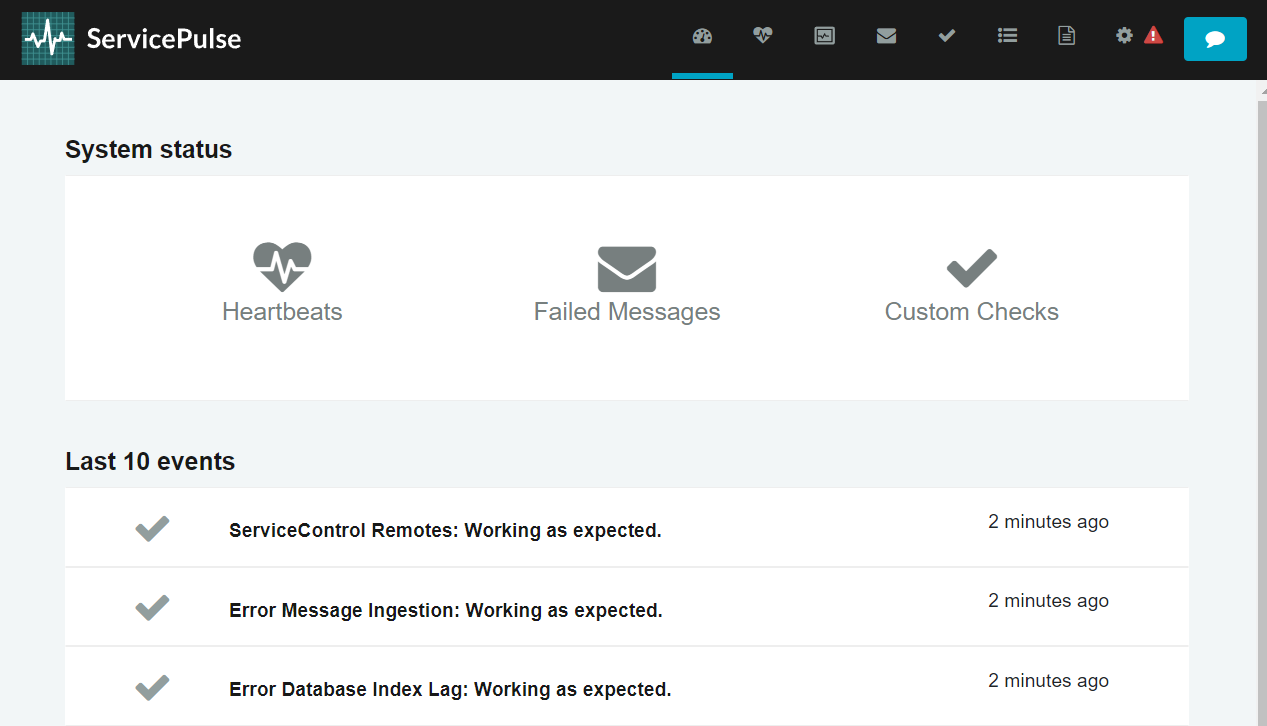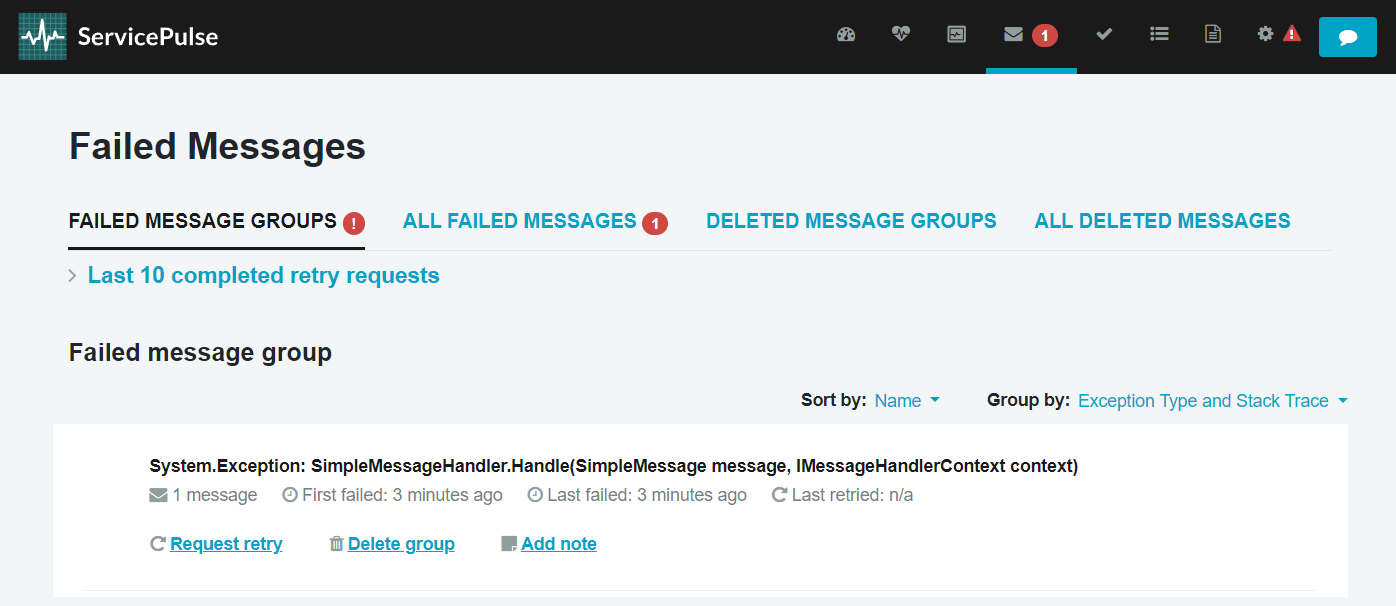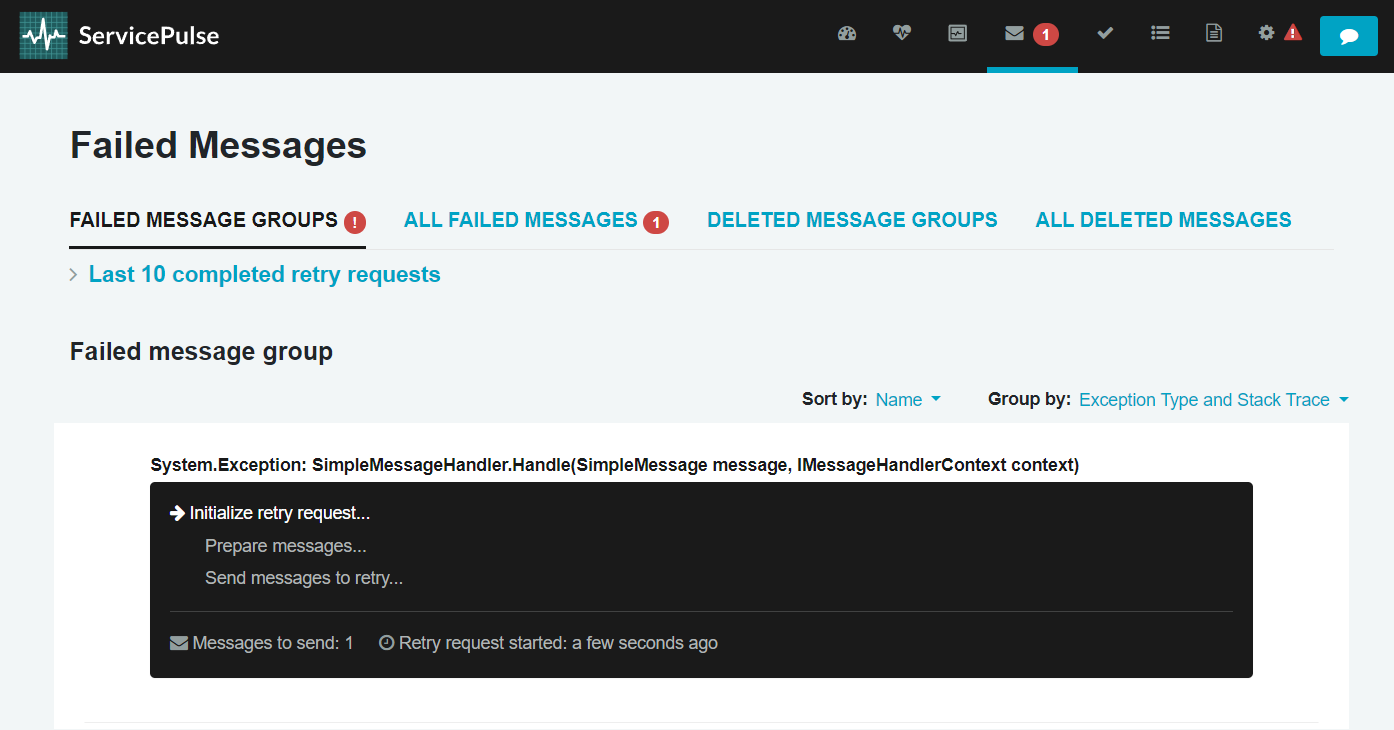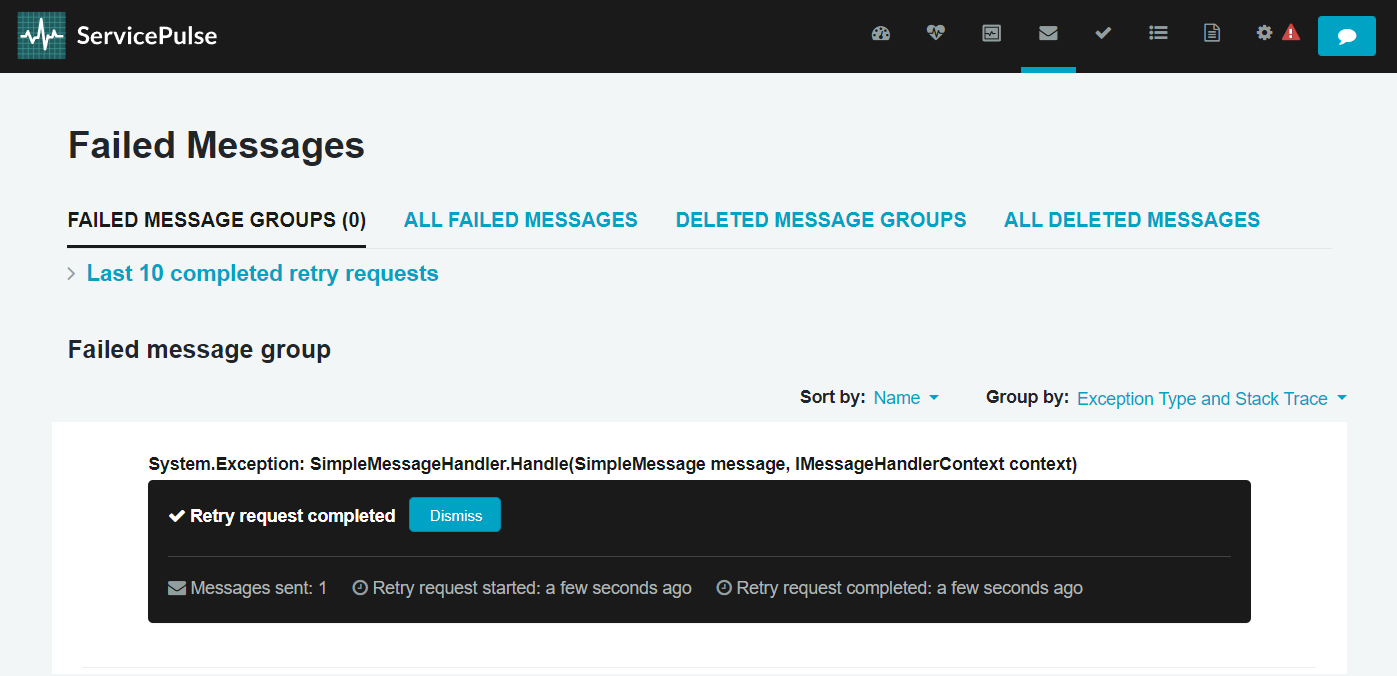This sample shows how to retry a failed message. The sample uses the Learning Transport and a portable version of the Particular Service Platform tools. Installing ServiceControl is not required.
Running the solution
Running the solution starts 3 console windows. Wait a moment until the ServicePulse window opens in the browser.

Sender
The sender is a program that uses NServiceBus to send simple test messages.
<div class='alert alert-primary'>NServiceBus.LicenseManager[0]</div>
Selected active license from C:\ProgramData\ParticularSoftware\license.xml
License Expiration: 2026-07-15
Press 'Enter' to send a new message. Press any other key to finish.
<div class='alert alert-primary'>Microsoft.Hosting.Lifetime[0]</div>
Application started. Press Ctrl+C to shut down.
<div class='alert alert-primary'>Microsoft.Hosting.Lifetime[0]</div>
Hosting environment: Production
<div class='alert alert-primary'>Microsoft.Hosting.Lifetime[0]</div>
Content root path: C:\git\p\docs.particular.net\samples\servicecontrol\retry-messages\Core_9\Sender\bin\Debug\net9.0
Press 'Enter' to send a new message. Press any other key to finish.
Press Enter in the Sender console window to send one.
Receiver
The receiver reads messages off a queue and processes them. By default, it runs in a fault simulation mode, which causes message processing to fail, including the one that has just been sent.
<div class='alert alert-primary'>NServiceBus.LicenseManager[0]</div>
Selected active license from C:\ProgramData\ParticularSoftware\license.xml
License Expiration: 2026-07-15
Press 't' to toggle fault mode.
<div class='alert alert-primary'>Microsoft.Hosting.Lifetime[0]</div>
Application started. Press Ctrl+C to shut down.
<div class='alert alert-primary'>Microsoft.Hosting.Lifetime[0]</div>
Hosting environment: Production
<div class='alert alert-primary'>Microsoft.Hosting.Lifetime[0]</div>
Content root path: C:\git\p\docs.particular.net\samples\servicecontrol\retry-messages\Core_9\Receiver\bin\Debug\net9.0
<div class='alert alert-primary'>Toggle[0]</div>
Received message.
fail: NServiceBus.MoveToError[0]
Moving message '6e387659-ea6b-47ee-8223-b31b00aa3d9f' to the error queue 'error' because processing failed due to an exception:
System.Exception: Simulated error.
at SimpleMessageHandler.Handle(SimpleMessage message, IMessageHandlerContext context) in C:\git\p\docs.particular.net\samples\servicecontrol\retry-messages\Core_9\Receiver\SimpleMessageHandler.cs:line 25
at NServiceBus.Pipeline.MessageHandler.Invoke(Object message, IMessageHandlerContext handlerContext) in /_/src/NServiceBus.Core/Pipeline/Incoming/MessageHandler.cs:line 43
(...)
Press t to disable the fault simulation mode so that the message is processed correctly once retried.
t
Fault mode disabled
ServicePulse
Going back to the ServicePulse browser window, there is a notification on the dashboard about one failed message.

Click on the failure symbol to see the datails. You can inspect the message headers as well as the payload.

Now click Request retry to initiate the message retry process i.e. sending the message back to the receiver's input queue for reprocessing.

Once the process is completed, go back to the Receiver console window.

Receiver
You can now notice that the message has been successfully processed.
t
Fault mode disabled
<div class='alert alert-primary'>Toggle[0]</div>
Received message.
<div class='alert alert-primary'>Toggle[0]</div>
Successfully processed message.
Code walk-through
For simplicity, both the immediate and the delayed retries are disabled in the sample. As a result, messages are moved to the error queue after a single failed processing attempt:
var recoverability = endpointConfiguration.Recoverability();
recoverability.Delayed(
customizations: retriesSettings =>
{
retriesSettings.NumberOfRetries(0);
});
recoverability.Immediate(
customizations: retriesSettings =>
{
retriesSettings.NumberOfRetries(0);
});
The receiver's failure mode is controlled by the FaultMode property. When true processing of SimpleMessage messages ends with an exception.
logger.LogInformation("Received message.");
if (FaultMode)
{
throw new Exception("Simulated error.");
}
logger.LogInformation("Successfully processed message.");
return Task.CompletedTask;